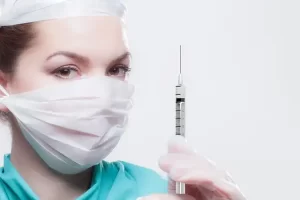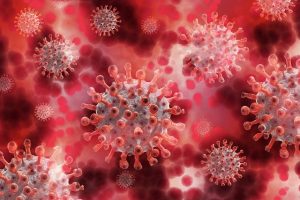Hair Loss Treatment Upgraded: Hairless Mice Grow Human Hair by Gene Editing !
- Mifepristone: A Safe and Effective Abortion Option Amidst Controversy
- Asbestos Detected in Buildings Damaged in Ukraine: Analyzed by Japanese Company
- New Ocrevus Subcutaneous Injection Therapy Shows Promising Results in Multiple Sclerosis Treatmen
- Dutch Man Infected with COVID-19 for 613 Days Dies: Accumulating Over 50 Virus Mutations
- Engineered Soybeans with Pig Protein: A Promising Alternative or Pandora’s Dish?
- Severe Fever with Thrombocytopenia Syndrome (SFTS): A Tick-Borne Threat with High Mortality
Hair Loss Treatment Upgraded: Hairless Mice Grow Human Hair by Gene Editing !
- Red Yeast Rice Scare Grips Japan: Over 114 Hospitalized and 5 Deaths
- Long COVID Brain Fog: Blood-Brain Barrier Damage and Persistent Inflammation
- FDA has mandated a top-level black box warning for all marketed CAR-T therapies
- Can people with high blood pressure eat peanuts?
- What is the difference between dopamine and dobutamine?
- How long can the patient live after heart stent surgery?
Hair Loss Treatment Upgraded: Hairless Mice Grow Human Hair by Gene Editing !
Today, hair loss has become one of the most troublesome problems of contemporary young people, because hair loss has greatly affected the image of young people.
Fortunately, some recent research suggests that scientists can treat baldness by genetically engineering cells to reprogram them. Ernesto Lujan , a biologist from Stanford University, said his company dNovo can genetically “reprogram” ordinary cells (such as blood or fat cells) to directly convert them into hair stem cells.
The company’s researchers have transplanted hair stem cells into mice, allowing hairless mice to grow human hair.

Figure | Hairless mice grow a tuft of human hair after transplanting hair stem cells. (Source: DNOVO)
It has been proved that hair stem cells can indeed “secondarily develop” skin hair follicles and grow new hair, but what is puzzling is why ordinary cells can become hair stem cells? Ernesto Lujan
, founder of the company, said: “In biology, we can understand a cell as a ‘state’ rather than a fixed identity, and genetic programming is about transforming a cell from one state to another. “
This approach to ‘cell state switching’ had a key breakthrough in the early 2000s, when researchers in Japan discovered a simple ‘formula’ to transform any type of tissue into a functional, embryo-like form. in stem cells. As a result, scientists realized that they could make almost every kind of cell.
In practice, however, methods for making specific types of cells have been elusive and have faced difficulties in returning lab-grown cells to humans.
In addition to the “cell state transition” approach, Professor Karl Koehler from Harvard University creates hair stem cells in a completely different way – by growing organoids. Professor Koehler wanted to grow hair-like cells inside the ear when he initially worked on treating deafness, but the organoids he grew ended up being skin with hair follicles.
It was an accident, but also a surprise, which allowed Prof. Koehler to grow spherical skin organoids that can grow for about 150 days, with a diameter of about 2 millimeters and a clearly visible tubular hair follicle.
In addition to this, the researchers are looking at cells from other donors to see if the organoids can give hair its unique color and texture.
 Figure | Skin organoids covered with hair follicles. (Source: Harvard Medical School)
Figure | Skin organoids covered with hair follicles. (Source: Harvard Medical School)
Professor Koehler said that although the hairs created by this method are ingrown, it also provides an important way to solve the problem of baldness.
From this point of view, although scientists have been working hard to find a way to treat hair loss and baldness, the road is still far away, and Professor Koehler said that treating hair loss with this method needs to be customized (after all, everyone’s DNA is different), and requires a very high cost.
Therefore, it is not feasible for ordinary people to save hair loss by transplanting hair stem cells. What we can do now is to find the cause of hair loss and then prescribe the right medicine.
Causes of hair loss
With the increasing pressure of work and life, hair loss has become a common phenomenon in our country.
According to the survey, more than 250 million people in China are currently suffering from hair loss, that is to say, 1 in 6 people suffer from hair loss.
What is even more frightening is that among the people with hair loss, the post-90s accounted for 39.9%! Among them, women account for about 43.7%, and men account for about 51.4%. I did not expect that they have already embarked on the road of hair loss at a young age. (It is quite “bald”.)
However, the hair does not want to fall off, it can fall off if it wants to. The hair loss we are currently facing mainly has the following six factors:
1) Androgen alopecia (seborrheic alopecia) : This kind of hair loss It is related to heredity and male hormones and belongs to permanent hair loss. Mainly manifested as receding hairline and progressive reduction and thinning of hair on top of the head, and a few manifested as diffuse thinning of hair;
2) Immune deficiency alopecia : Immune deficiency alopecia is alopecia areata. The main feature is transient non-trace alopecia with retained hair follicles;
3) Nutritional abnormal hair loss : When the hair follicles do not get enough nutrition or some nutrients are too cytotoxic, the hair may fall off;
4) Drug-induced alopecia : During the treatment of cancer patients with chemotherapy drugs, chemotherapy will damage normal cells other than cancer cells, such as hair follicle cells, thus causing hair loss;
5) Endocrine disorders and hair loss : postpartum, menopause, oral contraceptives, etc. will cause a certain period of estrogen deficiency and lead to hair loss;
6) Mental alopecia : Due to excessive mental stress (including staying up late) , the pili muscles of the scalp contract, resulting in disturbance of blood circulation in the head, thus causing hair loss. Studies have also shown that excessive stress can secrete the stress hormone corticosterone, which inhibits the expression of the GAS6 gene, thus keeping the hair follicle in a telogen state for a long time.
Relevant studies have shown that the main reasons for post-90s hair loss are staying up late and stress, followed by lack of exercise and poor eating habits.
For the “maintenance” after hair loss, prevention of hair loss is more important, after all, hair transplantation is expensive.
Self-diagnosing hair loss and preventing hair loss
To prevent hair loss, you first need to determine whether you have hair loss problems.
A normal person loses about 50-100 hairs a day. If you lose more than 100 hairs a day, it means that your hair may be leaving the scalp and is ready to “set sail”. At this time, you need to pay attention to find out the hair loss s reason.
Aside from counting how many hairs you’ve lost, there’s an easy way to test for hair loss: Using your thumb, forefinger, and middle finger, lightly grab a small section of hair from the root of the hair, then gently pull upwards in a continuous This action is repeated 5-6 times on different parts of the scalp. If you lose more than 3 hairs each time, there is a suspicion of hair.
In addition to hereditary hair loss, other hair loss caused by external factors can be avoided by some methods, including but not limited to:
1) Adjust your mentality: prevent hair loss caused by excessive stress, walking and proper exercise are conducive to hair growth;
2) Ensure adequate sleep: improving sleep quality can help improve hair loss;
3) Pay attention to nutritional balance: increase protein-rich foods in your diet;
4) Comb your hair every day: Massage the scalp to promote blood circulation in the head.
After reading this article, have you decided to sleep well?
References :
https://www.technologyreview.com/2022/01/18/1043751/bald-lab-grown-hair-cells/
https://onlinelibrary.wiley.com/doi/abs/10.1111/jdv.17079
https://www.nature.com/articles/s41586-021-03417-2
Hair Loss Treatment Upgraded: Hairless Mice Grow Human Hair by Gene Editing !
(source:internet, reference only)
Disclaimer of medicaltrend.org
Important Note: The information provided is for informational purposes only and should not be considered as medical advice.



